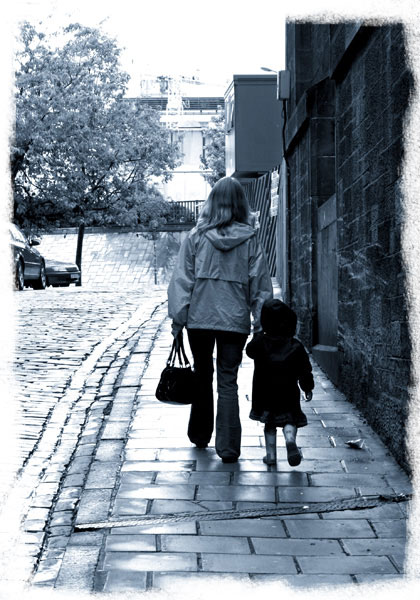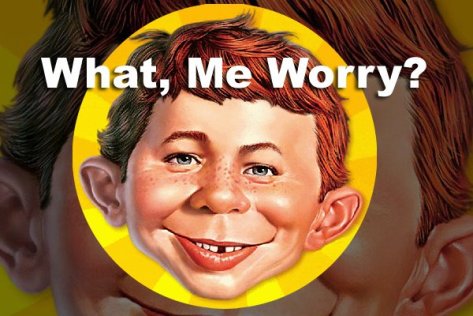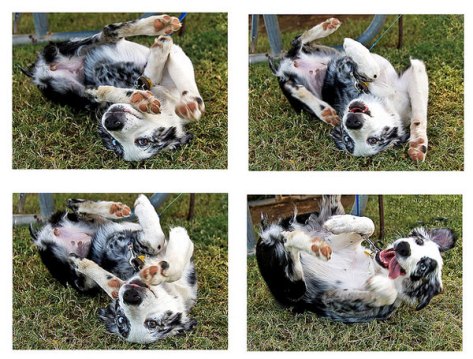When our daughter Jess was little, her dad and I used to take her to see a lot of animated movies. Jess and I really enjoyed them, but The Scientist often dozed off twenty minutes into the film. He slept through Toy Story and Shrek and Monsters Inc. before we all decided that a better plan was to split up when we went to the movies. That way he was free to see the latest action movie while Jess and I watched the newest offering from Pixar or Disney.
The Incredibles, Cars, innumerable sequels in the Monsters, Toy Story and Shrek series. Nightmare Before Christmas. Brave. WALL-E. Coraline. Up. Paranorman . . . Actually, I saw quite a few of those by myself. Jess is all grown up now and The Scientist still isn’t a big fan of kid’s movies. To be fair he stayed awake for the entire Lego Movie and thoroughly enjoyed Big Hero 6, but he wouldn’t have gone to see either if I hadn’t suggested it.
I imagine quite a few adults would consider my interest in animated movies that are mostly marketed to children to be childish. It certainly hasn’t escaped my notice that most of the other adults in the theater are there to chaperone children.
I’m not sure what it is about animated movies that I enjoy so much. Maybe it’s a sense of nostalgia, dating back to the time when I was a young parent and the excitement that we shared as a family going to a new movie. Maybe it’s the sly humor that the writers build in for the adults in the audience alongside the simple feel-good themes that most of the movies have. I’ve even seen it suggested that many of us gravitate toward animation because the exaggerated facial expressions are easy to decipher.
Maybe I just really like animated movies.
Whatever the underlying reason, it’s hard to escape the sense that my enjoyment of the movies is somewhat age inappropriate. I don’t know a lot of other middle-aged women who were as excited as I was about the Lego movie. I do know better than to blurt out “How about that Lego movie?” when talking with most other women my age.
Fortunately not all of my tastes in media run toward children’s programming. In fact, I wouldn’t be surprised if Netflix created a recommendation category for me titled “Dramas with Large Ensemble Casts and Lots of Cursing.” That gives me sufficient fodder for dinner party conversation when the subject turns to movies and TV.
Age Appropriate
The concept of “age appropriate” has been one that’s always haunted me. In elementary school, from about fourth grade, I began to get the sense that most of my peers seemed to somehow older than me. As if they knew something I didn’t.
By the time I got to middle school, that vague sense of being “behind” widened into a very obvious maturity gap. Many of the other girls in my class were developing an interest in dating and fashion and other things that marked a critical right of passage, and in which I had little intrinsic interest. In high school, most of my peers spent the school week looking forward to a weekend of drinking, partying, dating, football games and dances. Again I felt left out, having barely caught up with the concept of dating.
My interests ran more toward listening to music, reading, riding my bike, and shooting baskets in the driveway. At least the ones that I would publicly admit to. I also had a huge fascination with the TV show M*A*S*H and still liked to pull out my collections of baseball cards, stamps, and coins. Occasionally I pulled out my model train set or my Matchbox cars and Barbies were still in my closet. My bed was home to as many stuffed animals as it could hold and I still had a well-worn baseball mitt that I’d gotten in fourth grade.
Instinctively, I knew that there were things that it was “okay” for a teenaged girl to be interested in and interests that were best kept to myself. Sometimes the appropriateness of an interest hinged on gender stereotypes, but just as often it was related to age, either in the sense of something being “too childish” (or sometimes “too adult”) for the age that I currently was.
I spent a lot of years assuming that I would simply catch up with my peers, that I would develop an interest in partying and chasing boys at football games and gossiping on the phone for hours after school each night. When I graduated, without that ever having materialized, I somehow went right on assuming that I would catch up with the adults that I saw around me who invariably seemed much more adult to me than I seemed to myself.
I’m sure this is a typical reaction of many young people as they make the transition into adulthood in their early twenties, however I was still thinking this in my late thirties and early forties. After being diagnosed with Aspergers, I finally realized that there would be no magical catching up with my peers. I was simply different and that was okay.
By Whose Milestones?
The really interesting aspect of this to me, is that while autism is commonly referred to as a developmental delay, no one ever explicitly told me that I was “delayed.” Many years spent comparing myself to my typical peers and seeing the obvious differences had somehow caused me to assume that I was just a few steps behind them.
It’s not surprising to me that many parents look at their autistic children and make the same assumption, often with the encouragement of doctors, teachers, and other professionals in their children’s lives. And in the same way that I passed many years simply assuming that I would catch up, I think many parents spend years operating under the assumption that the goal of their children’s education should be to “catch them up” to their typical peers rather than to equip them in ways that are practical and useful for the child.
Ariane Zurcher recently wrote a blog post about how focusing on the belief that her daughter Emma was developmentally delayed caused her to pursue therapies that in the end she felt were not helpful to Emma. Here’s a quote from that post (emphasis is mine):
“for us it meant constantly comparing our daughter to her non autistic peers (using their development, and not hers, as the ideal). It meant pursuing all kinds of therapies that never questioned the push for spoken language. It meant not considering AAC devices, because she “had language.” It meant encouraging my daughter to “use your words.” It meant asking her to focus on things that made it impossible for her to concentrate on what was being taught. It meant looking at her through the lens of deficits, so much so that they became blinders shutting out everything else.”
Ariane’s words hint at the danger that lurks in the idea that autistic kids need more than anything to catch up to their nonautistic peers. The emphasis, when working from that assumption, is on getting the child to do things in a way that may not be the best possible way–or even possible at all–for them.
A straightforward and common example is speech. Here are some standard developmental milestones for speech and language:
- by 3 months: makes eye contact
- by 6 months: imitates sounds and facial expressions
- by 12 months: says 1 or 2 words
- by 21 months: uses at least 50 words, names objects
- by 24 months: begins to use 2 word phrases, uses simple pronouns
- by 36 months: asks simple questions
If an autistic child isn’t making eye contact, smiling when smiled at, or saying a couple of words by 18 months, it’s very natural for their parents to look at the other toddlers who are doing all of these things and assume that their child needs professional intervention to help them catch up with their peers.
However, autistic language development varies greatly from the developmental norms. Some autistic people speak early, some at a typical age, others at a later-than-average age and some not at all. Some of us use speech for simple interactions and text or other means for more complex interactions, while others use AAC for all communication. Some of us never reach typical milestones and other leap over milestones at an atypical age.
We are each literally our own developmental milestone chart and to compare an autistic person’s language development to their peers–autistic or not–is both unfair and counterproductive.
The typical developmental milestones are useful as a diagnostic aid, but beyond that they are simply a distraction. Rather than focusing on meeting a set of speech milestones, the emphasis should be on finding communication methods that work reliably for the individual autistic person.
The Fallacy of Mental Age
Another potential pitfall of the developmental delay paradigm is that it leads to the assumption of “mental age” in those individuals who don’t meet developmental milestones on the expected schedule.
If a child is mostly nonspeaking until the age of 5, echolalic for several years after that, and begins to use short phrases at 12, some people will make the assumption that the child not only has the language abilities “of a 2-year-old” but also the thought processes and cognitive abilities of a 2-year-old. As many parents of children who began speaking at a later age can tell you, that’s far from true.
A person who is echolalic at 7-years-old, speaks in short phrases at 12 and uses some sentences at 22 isn’t simply delayed. They have a completely different communication ability than their peers. It’s entirely possible that they’ve been capable of typing in full sentences for a decade or more before they used any sentences verbally. Perhaps not, but unless they’re given the chance to learn to use a variety of communication tools other than speech, no one will know for sure.
Chronologically Out of Step
The inspiration for this post was in part a Facebook discussion that Ariane initiated prior to the post I linked to above and in part some comments on the Intersection of Gender and Autism posts here.
I was struck by how many of us had a sense that we were somehow lagging behind our peers when we were younger or how we still had interests that might be considered age inappropriate by people given to making such judgments. In each of these comments, there was a hint (or more) of embarrassment around these interests.
That got me thinking about all of the ways that I’ve felt chronologically out of step over the years and, more importantly, why. As always, the what of it is fairly easy to quantify, but the why is trickier.
Sometimes the sense that I was lagging behind was tied to not wanting to give up a special interest or to returning to a “childish” special interest for comfort. My love of animated movies and the giant stuffed dog that resides on my couch are a couple of innocuous present-day examples.
Other times, particularly around adolescence, I think missing out on big chunks of social cues and being mostly oblivious to certain types of peer pressure contributed to my sense that I was socially and emotionally younger than my peers. I suspect most kids didn’t necessarily want to start dating in middle school, but they knew that socially it was important to show that they did. It made them seem mature or cool or whatever it was that meant fitting in. Which, incidentally, was exactly the thing I could never seem to intuit and obviously still can’t quite pin down.
Most likely, there were girls who made fun of me in middle school and high school for being so out of step with what was expected but I was mostly too clueless to notice if anyone was whispering about me behind my back. And really, when you have people who will outright tell you that you’re a dork to your face, there isn’t much point in searching for more bad news.
These things, combined with the ever-present sense that I was different from most other kids left, me always feeling the need to catch up but never quite knowing how to do that.
Which brings me to an interesting point that Anna raised in the comments: there is a difference between throwing out the concept of a delay and throwing out all hope of a person learning new skills. She specifically mentioned that as a child, she was left to her own devices a lot and not really pushed to learn organizational or social skills or to further her interests in new ways. She pointed out the value of a “golden middle way” in respecting differences while helping children develop the sort of executive function skills and understanding of the social world that will smooth the road for them a bit as adults.
When Frogs Fly
Finally, it’s important for parents and others who work with autistic kids to understand the difference between, for example, understanding the social world and having neurotypical social skills. The former is achievable to some degree for many of us on the spectrum; the latter not so much.
For example, my social skills are not and never will be those of a typical adult. I don’t have the social skills of a 14-year-old or a 20-year-old or a 30-year-old. It’s not as if I’m simply behind some imaginary developmental curve. My ability to read facial expressions and body language has been “stuck” at the basic level for decades. And I’m fine with that. I have coping mechanisms to make up for some of what I lack and the rest I’ve learned to live with. In the past, I’ve tried to learn how to read more subtle nonverbal communication and finally concluded that it’s not going to happen.
In fact, as I was talking about some preliminary ideas for this post with The Scientist, I told him that teaching me to make consistently natural-looking eye contact would be like teaching a frog to fly. No matter how many times you take the frog up on the roof and toss it off, it’s never going to sprout wings. And it doesn’t need to.
———
A/N: While looking for photos to illustrated this post, I saw the gingerbread people photos and thought “ooh, cute!” and decided to use whimsical gingerbread people family portraits to illustrated my Very Serious Post because it felt delightfully age inappropriate.
















